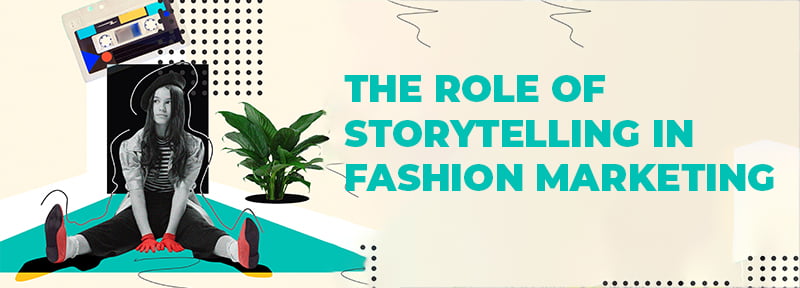Storytelling in Apparel Marketing: The Bangladesh Angle for U.S. Brands
n today’s saturated apparel market, brands must go beyond just offering quality products. They must forge emotional connections with consumers—and storytelling is one of the most powerful tools to achieve this. For U.S. apparel companies sourcing from Bangladesh, incorporating authentic narratives from the production journey adds depth, transparency, and cultural relevance to their marketing strategies.
Storytelling not only enhances brand identity but also builds consumer trust. With Bangladesh being one of the top textile producers globally, its vibrant manufacturing sector provides rich material for crafting compelling stories. To translate that potential into effective campaigns, a bestsourcing agent Bangladesh plays a vital role in bridging the narrative between factory and fashion line.
Why Storytelling Matters in Apparel Marketing
Consumers now value how their clothing is made just as much as the end product. Ethical production, sustainability, and human stories are crucial factors driving purchasing behavior. Today’s buyers want to feel emotionally invested in their purchases, especially when it involves cross-border sourcing.
The right story can elevate a simple cotton shirt into a symbol of empowerment, innovation, or tradition. That emotional resonance is particularly effective when sourced from an ecosystem as culturally and economically dynamic as Bangladesh’s.
Highlighting Human Stories from the Supply Chain
Apparel marketing rooted in Bangladesh can highlight the craftsmanship of local artisans, stories of female empowerment in garment factories, or sustainable textile innovations in rural areas. These stories resonate strongly with values-driven consumers in the U.S.
Using content that captures real people and their contributions makes your product relatable and unique. A bestsourcing agent Asia helps U.S. brands access verified production sites and interview opportunities with factory workers, quality controllers, and small-scale weavers.
The Rise of “Origin Branding”
Origin branding focuses on promoting the country and conditions under which a product is made. For example, showcasing that an item is handcrafted in Dhaka by third-generation weavers not only communicates quality but also heritage.
The phrase “Made in Bangladesh” can be more than just a label. It can become a mark of tradition, skill, and resilience—especially when narrated through visual and written content developed with local insight. This is where a bestsourcing agent Bangladesh ensures brand messages stay authentic and aligned with cultural truth.
Creating Visual Campaigns with Local Flavor
Telling stories through photos and video brings narratives to life. Behind-the-scenes factory footage, textile dyeing workshops, and local celebrations where employees are featured can give the product emotional weight.
Visual storytelling becomes more powerful when it includes local textures—color palettes inspired by Bengali festivals or motifs that reference regional folklore. Collaboration with a bestsourcing agent Asia enables brands to coordinate shoots, obtain permissions, and work with native creators who understand how to represent local culture accurately.
Transparency Is the New Currency
In an era where customers demand accountability, transparency is more than a corporate checkbox—it’s a marketing asset. Showcasing ethical sourcing, safe working conditions, and real impact on local communities builds trust.
Sharing real-time insights from the supply chain, such as water-saving techniques or upcycled fabric use, is only possible with solid ground-level partnerships. A reliable bestsourcing agent Bangladesh can facilitate site visits, third-party audits, and provide credible documentation that feeds into transparent storytelling.
Tapping into User-Generated Content
Encouraging customers to share their experiences through social media allows for organic storytelling. When a buyer learns about the family-run cooperative that stitched their clothing, they’re more likely to spread that narrative.
This word-of-mouth amplification can be guided through hashtag campaigns, interactive digital packaging, or QR codes linking to mini-documentaries. Setting up this infrastructure is easier when logistics, sourcing timelines, and production transparency are streamlined through a bestsourcing agent Asia.
Emotional Branding in the U.S. Market
American consumers are increasingly choosing brands that align with their ethical and environmental beliefs. Sharing stories from Bangladesh’s garment industry—focusing on real-life aspirations, sustainable practices, and generational craftsmanship—resonates with these buyers.
For instance, a winter collection could tell the story of a Bangladeshi village that survives by weaving wool during monsoon off-seasons. That narrative transforms a fashion item into a storytelling device.
A trustworthy bestsourcing agent Bangladesh ensures the accuracy of such narratives and avoids misrepresentation, which could otherwise backfire.
Conclusion
Storytelling isn’t just a marketing strategy—it’s a bridge between cultures, economies, and values. U.S. brands working with Bangladesh’s apparel sector have an incredible opportunity to humanize their supply chain, elevate their product, and differentiate their voice in a crowded marketplace.
From sourcing to narrative execution, aligning with a bestsourcing agent Asia allows for deeper engagement with both the production process and end consumers. Authentic storytelling rooted in Bangladesh’s apparel ecosystem is not only compelling—it’s commercially smart.
